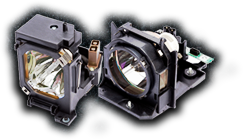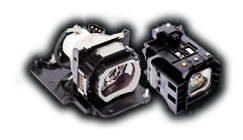Many Epson projectors have a few quirks when it comes to lamp hours and this projector is no different. Find out the quirk below, so you don’t get caught wondering why your lamp hours are not counting after performing the reset.
First, to find out the lamp usage hours for the Epson HC8345, you will need to access the on-screen menu. Make sure your projector is turned on and you have an image displaying on your screen.
- Press the [Menu] button on the remote control.
- Navigate using your remote control and find the [Info] menu.
- In the [Info] menu, there is a section called [Lamp Hours]. It will show the lamp hours on this screen.
In the manual, it says to replace the lamp when you notice these things:
- The image is too dark for your viewing enjoyment.
- The LED lamp light indicator flashes red at ½ second intervals.
- The “Replace the lamp” message appears on the screen as you are watching.
After replacing the lamp, you will want to reset the lamp usage hours.
Plug in the projector, turn on the main power switch on the back of the projector, and then press the power button. Once the projector has warmed up and you have the projected image on your screen:
- Press the [Menu] button on your projector or remote control.
- Use the navigation button on your remote (or projector) to scroll to and open the [Reset] menu.
- Once in the [Reset] menu, navigate to and select [Reset Lamp Hours].
- Once the confirmation pop-up appears, highlight the [Yes] and press the [Enter] button.
- It will confirm the hours are reset and you can now exit by pressing the [Menu] button.
The Quirk: The lamp usage timer will show 0H or zero hours once it resets, however, it will remain at 0H and will not appear to be counting hours for the first 10 hours or so. Don’t worry, after it’s reached more than 10H, it will start counting the hours and show the total. Don’t ask us why Epson programmed the timer to function this way. Keep this quirk in mind, since many people think that the lamp is broken, or something is not working when in fact this is perfectly normal.


